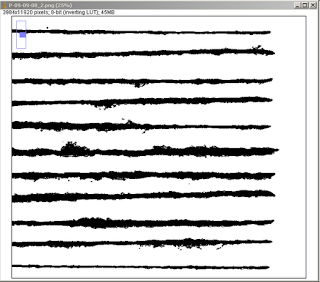I am wrestling with Excel, and it is winning. I have not yet made it to the breakthrough in R (I think I need someone to teach me R for dummies, as I am somehow shattering on the most basic things, like importing an Excel workbook with several sheets and saving that as a dataframe) but I need some quick results. Not much, mind you; not the full analysis... but at least something. Something! And I would know how to get it! But... I have made the mistake of saving the formulas in one workbook, and now I need them in another one. And due to the perverseness of my system, and that of Excel, and that of the worksheets... I get an out-of-memory error every time. No, the workarounds all do not work. Yes, I have tried them all (at least all that I could find). Arrr...
And since two people posed the same question yesterday: From what I remember of Swedish coffee (real Swedish coffee drunk in Sweden, from a cafe or a selling point for caffeinated hot drinks) they are large, they are strong (but not overly so) and they are delicious to my taste - with neither too much acidity nor too much bitterness. Not like the thing we termed "Swedish coffee" at the Forum - though of course there are different strength and quality coffee experiences to be found in any country.
German plain coffee roasts often have a tendency to be quite acidic, and the sourness is something I neither like nor can stomach well, so I am fond of the "milder" kinds of beans here, and I generally prefer the fancy coffees with lots of milk (latte macchiato, anyone?). And the coffee I tasted in the Czech Republic was not really acidic, but always quite, quite strong, plus the beans and/or roast and extraction must have been different, since it was very bitter (at least to my taste).
Your coffee-when-traveling observations are very welcome in the comments - I'd be interested to hear what experiences you have had!
And since two people posed the same question yesterday: From what I remember of Swedish coffee (real Swedish coffee drunk in Sweden, from a cafe or a selling point for caffeinated hot drinks) they are large, they are strong (but not overly so) and they are delicious to my taste - with neither too much acidity nor too much bitterness. Not like the thing we termed "Swedish coffee" at the Forum - though of course there are different strength and quality coffee experiences to be found in any country.
German plain coffee roasts often have a tendency to be quite acidic, and the sourness is something I neither like nor can stomach well, so I am fond of the "milder" kinds of beans here, and I generally prefer the fancy coffees with lots of milk (latte macchiato, anyone?). And the coffee I tasted in the Czech Republic was not really acidic, but always quite, quite strong, plus the beans and/or roast and extraction must have been different, since it was very bitter (at least to my taste).
Your coffee-when-traveling observations are very welcome in the comments - I'd be interested to hear what experiences you have had!






